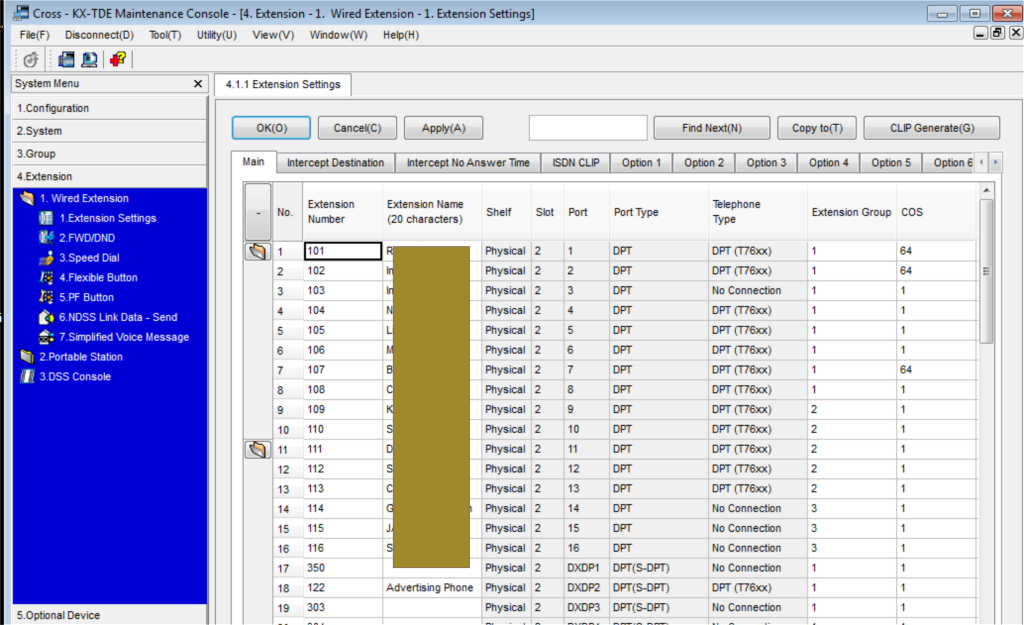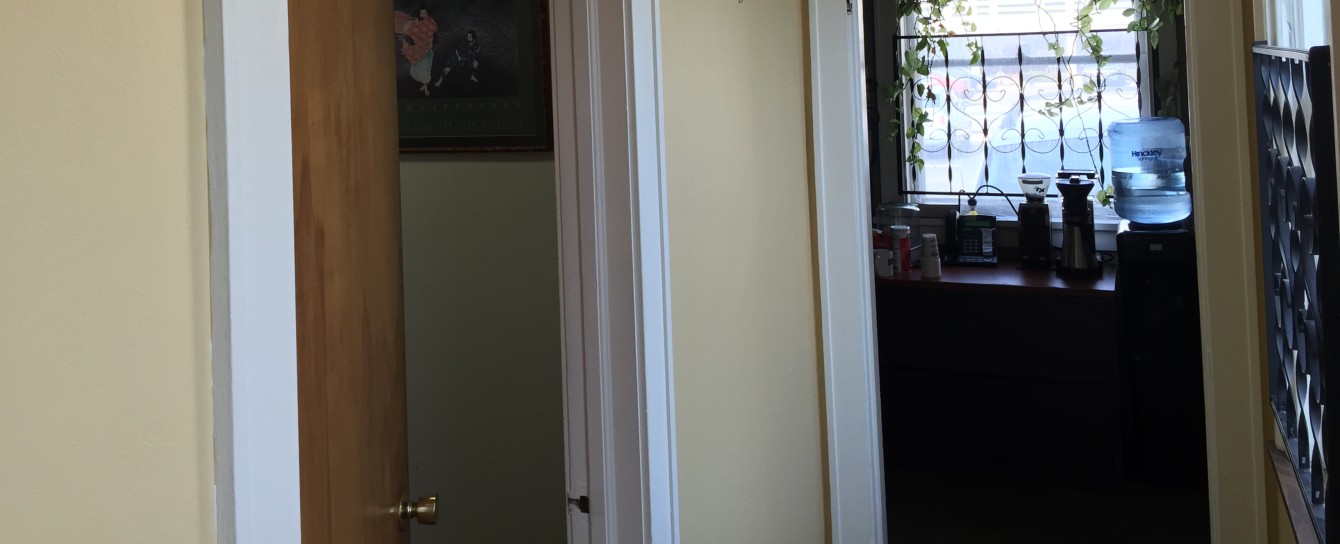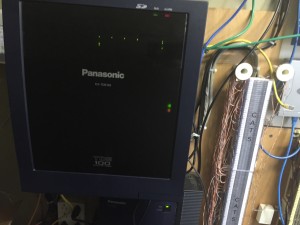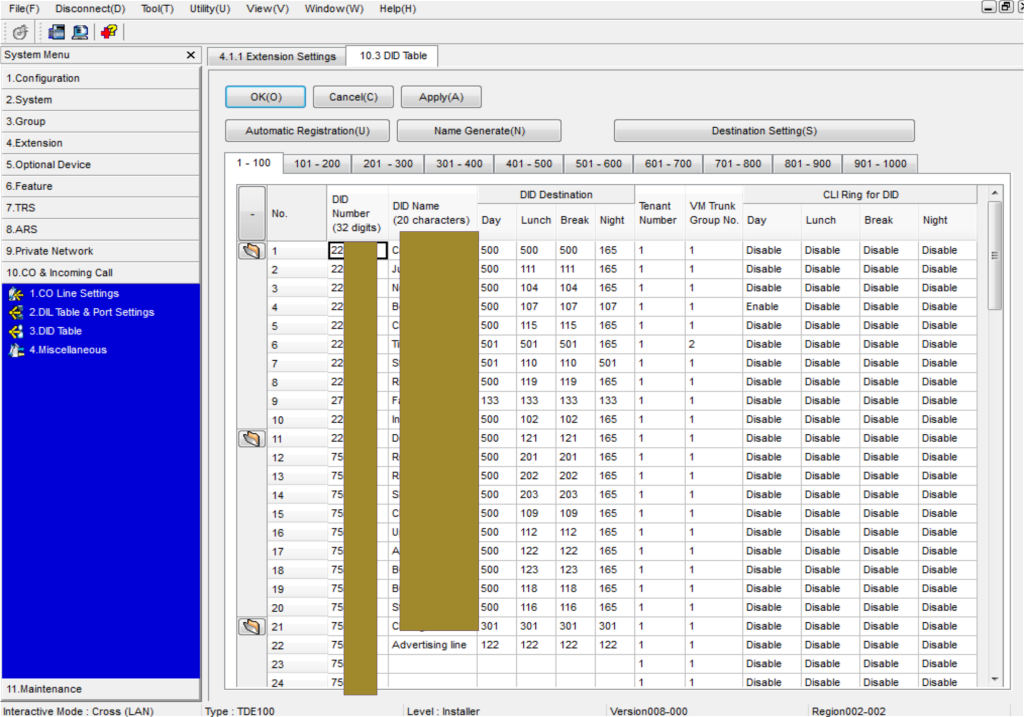Problem: CALL FORWARDING FEES Solution: IP PBX
We recently upgraded to a Panasonic digital KX-TDA100 from a hybrid KX-TDE100 PBX. Our PBX runs our phone system.
The justification for the upgrade was the ability to add SIP trunking, IP based call accounting, and direct GUI control of the phones system.
We want to take advantage of SIP trunking because we have several call forwarded numbers and want to take advantage of a 1-800 number we could use if we had that capability. Call forwarding is old fashioned (one call at a time or a busy signal) and expensive ($.45 per) and since ATT and YP (Cerberus Capital) split my land line billing has been difficult.
I have wanted reasonable phone accounting software for ages. The TDE only spit out SMDR which means expensive software or a hack that is WAY too much trouble. It really wants to send it out from a serial cable and when you actually find a computer with one of them on there OR actually get the USB driver to work, you have to deal with the mostly unintelligible SMDR, which Im sure seemed like a great leap forward to Bell Labs in the 60’s. From what I understand call accounting software with an IP PBX is substantially cheaper because there is no hardware needed to convert the SMDR. Im getting quotes at about 1/4th from what it was with the Hybrid TDE.
So much of the phone systems are still built around technology that came online in the 50’s and 60’s, that often when you have an “all digital” system you are still bottle necked somewhere if not on your network than the phone Co., but at least with digital you have a lot more control of your system.
Call accounting is an important part of any business, and software is the cheapest way to get this done. I use it to plan for staffing, to check up on complaints, to limit call tolls, and improve customer service. Just like anything else I am always surprised when I get them most calls. For example, we get %40 of our calls in the 5 mins before and after the top of the hour. I don’t let the front office go to the bathroom at the top of the hour.
This is just the tip of the iceberg for what can be done with call accounting, so I will leave that for another post.
SIP Trucking connects a phone number to a PBX with an IP connection. I have heard about issue with SIP for years. From what I can tell the technology has come far enough, and crucially so has the cost of bandwidth that it is feasible. As with any deployment, but SIP in particular, pre-planning, limited roll-out and testing are time honored techniques to reduce Back Office issues. As with anything that goes outside the office and is out of my control, I like to have a competent vendor on hand to coordinate with the various providers.
Our job is to make it as easy as possible for the client to pick up that phone, and while a pain, local and other toll-free numbers make it easier for them.
With the TDE I would have to manually enter commands to either program a phone or the phone system. E.G. If I wanted to change a button on a phone I would have to press the Programing button, the button, then the code to change the button, then the code for the new button, another code for the extension, and anther code to save the configuration. Fun!
Now there is a GUI: The Panasonic PBX Unified Maintenance Console. Good luck getting a hold of the program with out your dealer’s help. 5 Years ago you could find the proprietary software somewhere on the net, but it looks pretty locked down now. The GUI is a little hard to get used to but my dealer walked me through the main menus so I felt like I could get through it easily. 
Here I can change Physical Phone Attributes
Here I can control my incoming lines.
The old system meant that I either had to pay the dealer to come program the phones or learn the 600 page code book, which I did. I have nothing against having vendors come and fix things, but the office I support does not want to wait. We have not made too many changes to our Phone network in the last couple of years, but I still paid more than $300 in 2014 to have someone do what I can now do myself. Again the issue is not the money as much as the fact that I can change it at will, without waiting for them to come to the office. This also means Im more likely to play around with the system and get more out of it. Conversely it also means I am more likely to break it.
Install
My telecommunications vendor Intellicom of Wisconsin came out and upgraded the cabinets in about 20 mins. It took longer to wait for everyone to get off the phones. The operation is a basic clone and card swap job but I wouldn’t try it at home. The dealer system has its drawbacks, but at least you know you have the support right up to Panasonic to make sure your phones are ringing. There is no reason to take risks with mission critical infrastructure like the phones.


